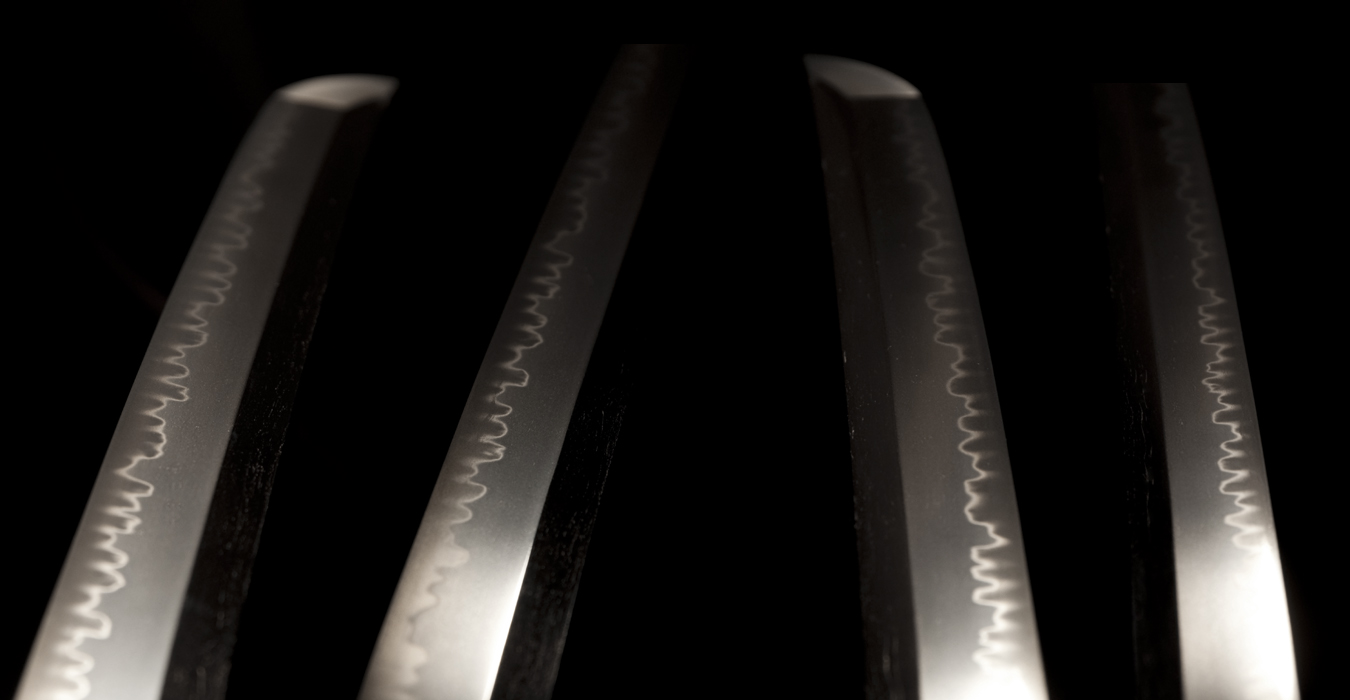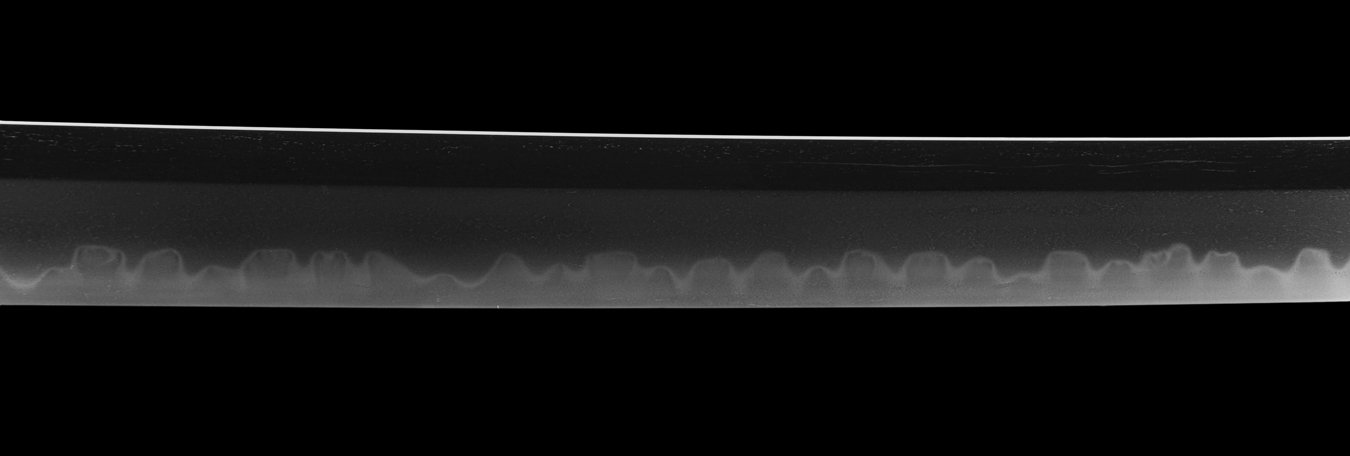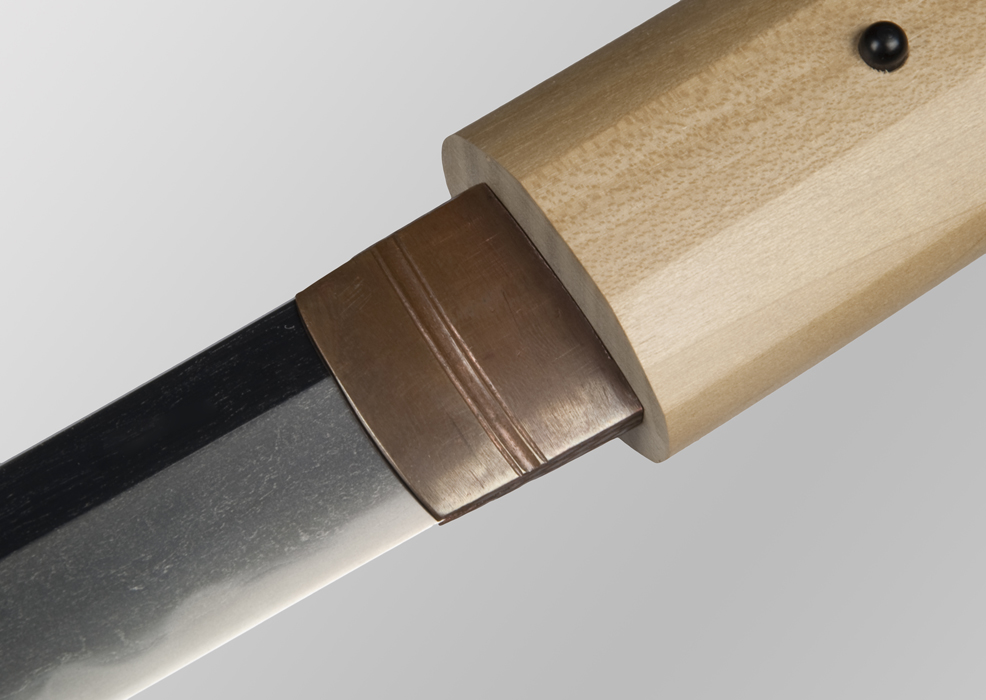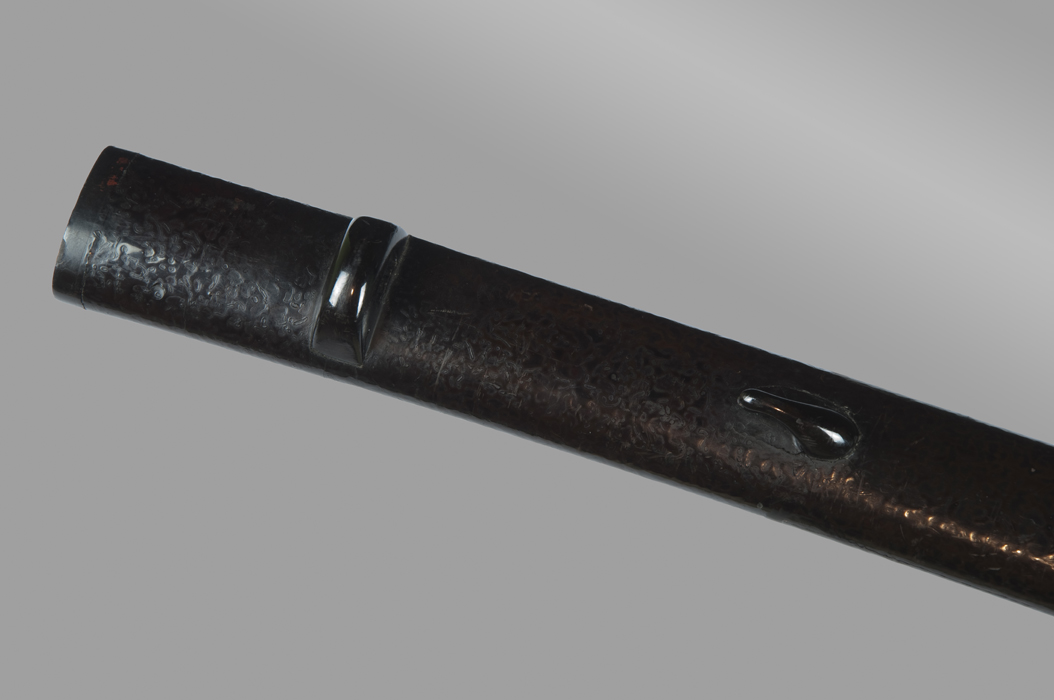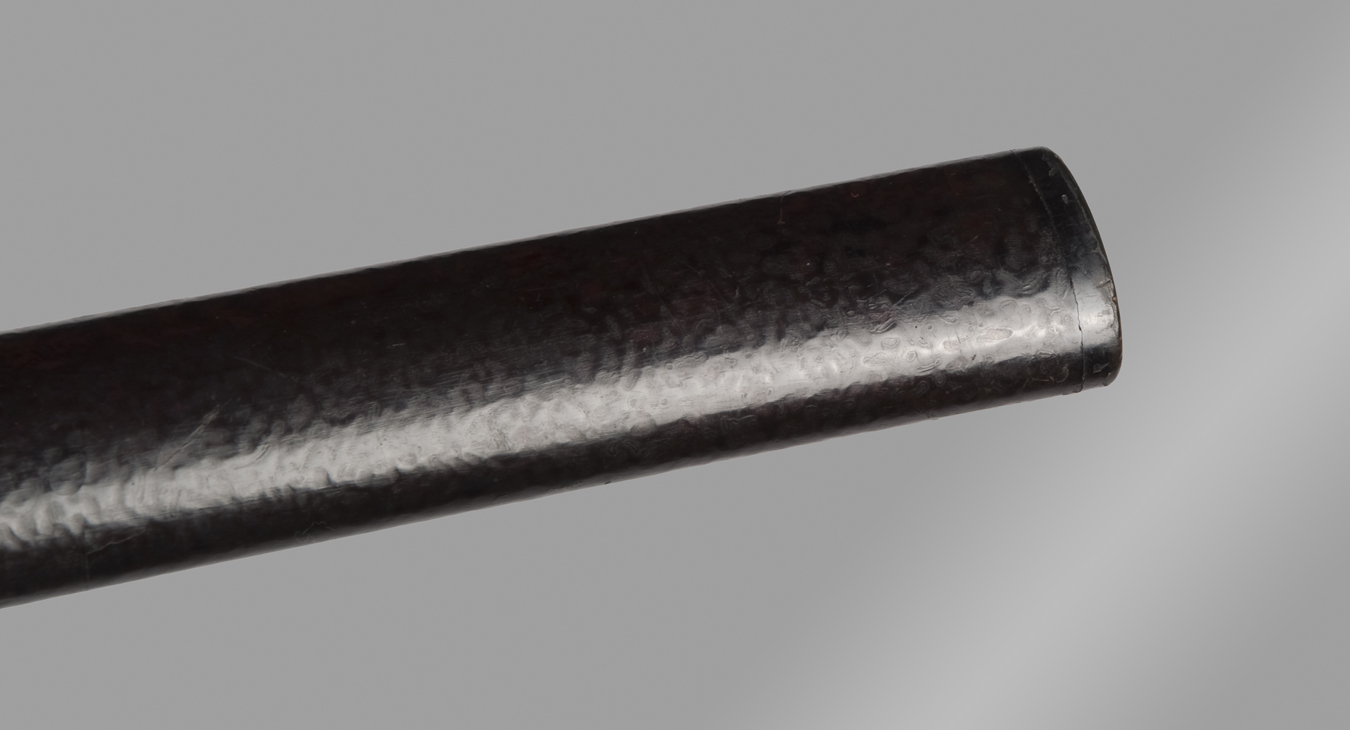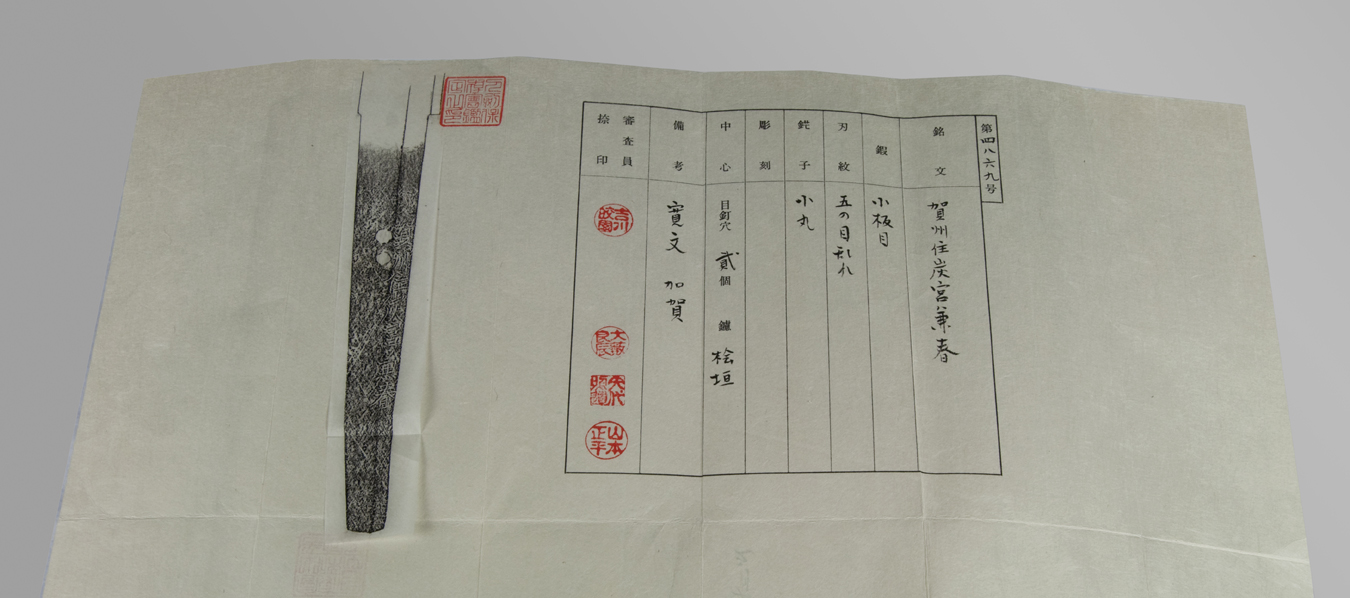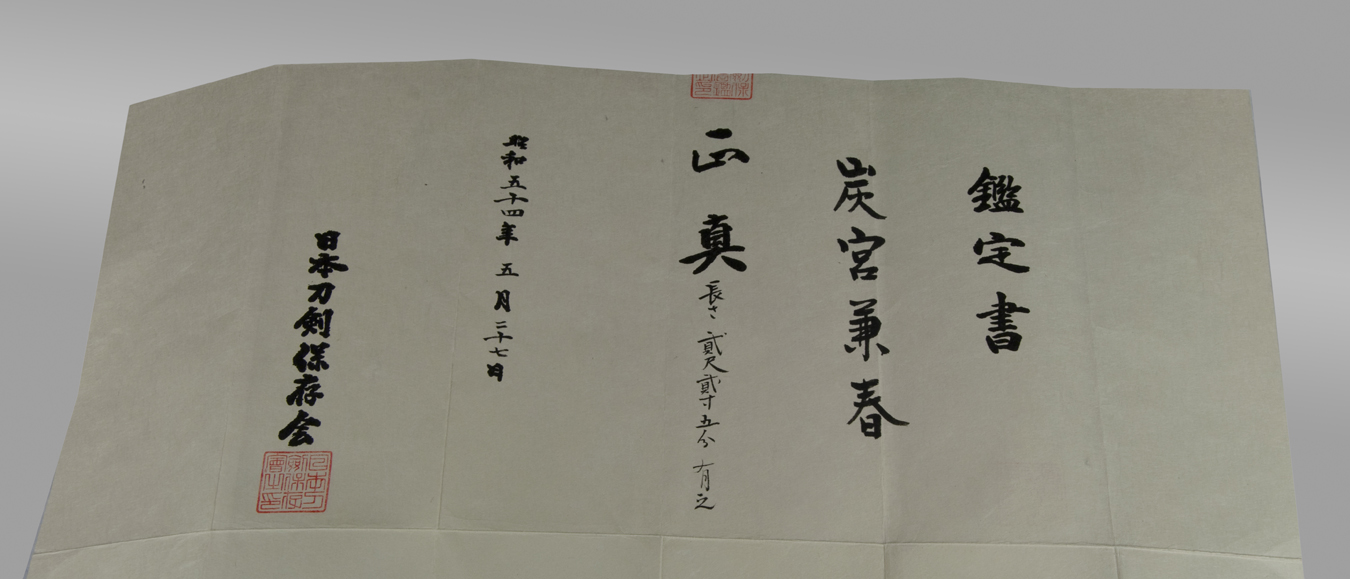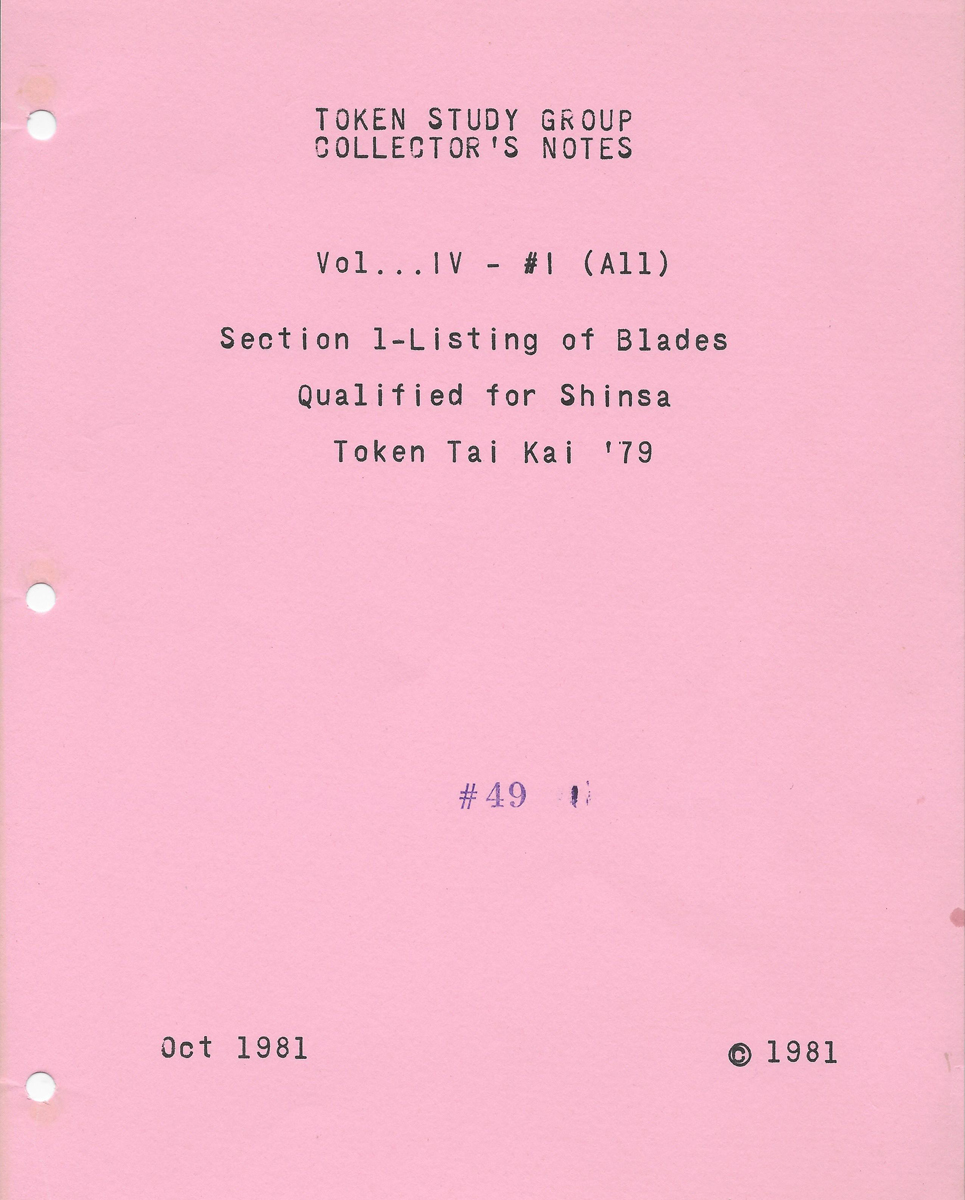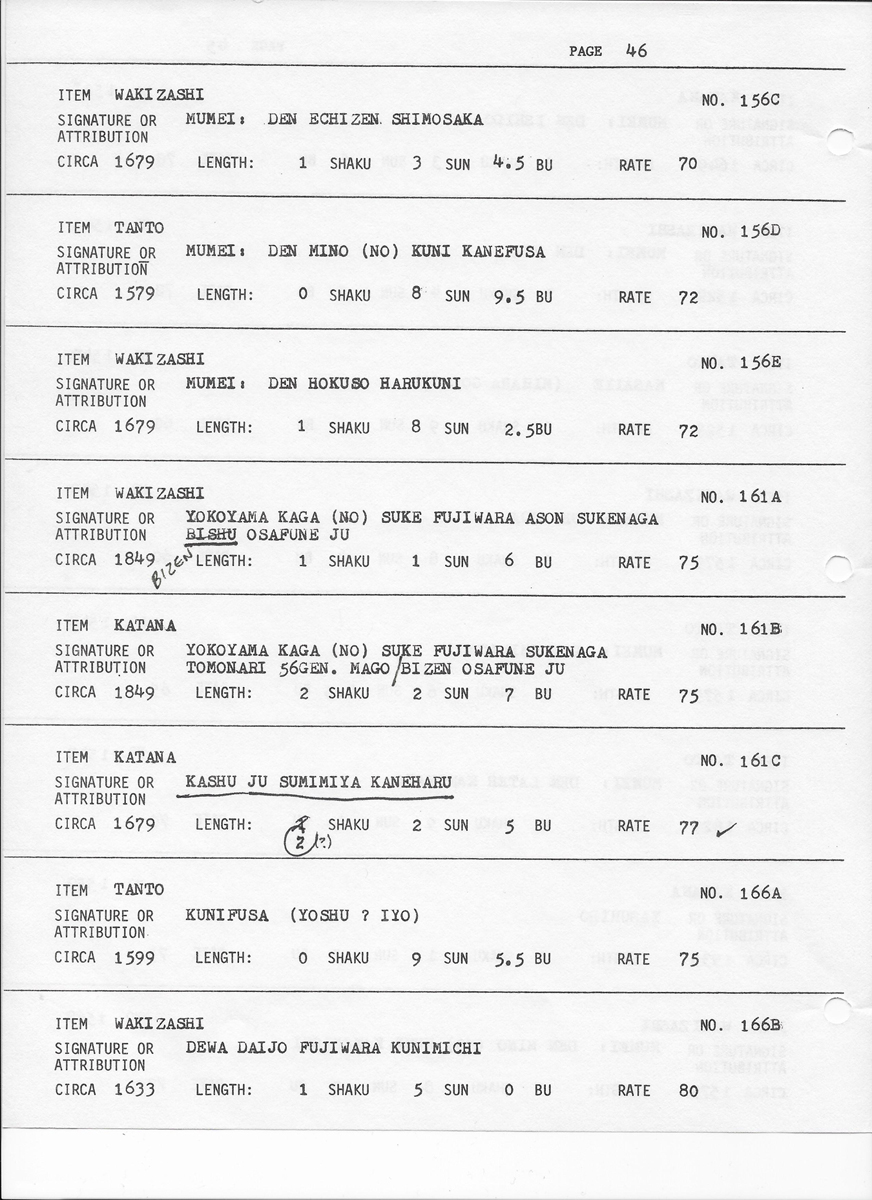|
| |||||||||||||||||||||||||||||||||||||||||||||||
Hamon : Ko-nie gunome choji midare. There are some hako(box)shapes. The nioi-guchi is tight and bright. Nie is sprinkled in areas. There are ashi and sunagashi. The sunagashi intersects the ashi and the tops of some of the gunome.
Boshi : Ko-maru with a medium kaeri.
Kitae : Ko-itame that is covered in ji-nie. There are fine chikei throughout.
About this sword : This katana is by the third generation Kaga Kaneharu. He was active around Kanbun(1661-1673) and his common name was Sumimiya Sakubei. He was the son of the nidai Kaneharu who worked at castle town of Komatsu. This third generation Kaneharu is ranked at 2.5 million yen in the Tokotaikan and Wazamono by the Yamada family for the cutting ability of his works.
This blade is in full polish. This polish has a light hadori that follows the nioi-guchi niclely. The jigane is clear and the ji-hataraki is clear. There is some running masame hada in the shinogi-ji. There is no coarse hada or ware in the ji or ha and the work shows excellent control in both the kitae and tempering. This comes with a 1979 NTHK kanteisho paper issued under Yoshikawa Kentaro. Yoshikawa gave this blade 77 points. This is a high score from this judge in the 1970s. The work sheet has been lost but the score is recorded in the 79' Token Study Group Collector's notes, shown below. This sword is ubu. One can see that the nioi guchi ends right at the machi on each side, when viewed in hand.
This katana comes with a shira-saya and an old copper habaki. This habaki is an Edo period one and appears to be from the Shonai area. It may speak to the history of this katana. The original Edo peroid saya is also with the blade. It is in good condition with ishime urushi and horn fittings. The workmanship of this blade is impressive and it is a joy to study. One can see the Kanbun sugata in this sword and shinto tokuden with the subtle flavor of Kaga shinto (hako midare) and Mino(higaki yasuri) mixed in. A nice, ubu, zaimei, papered katana in full polish and reasonably priced.
SOLD


